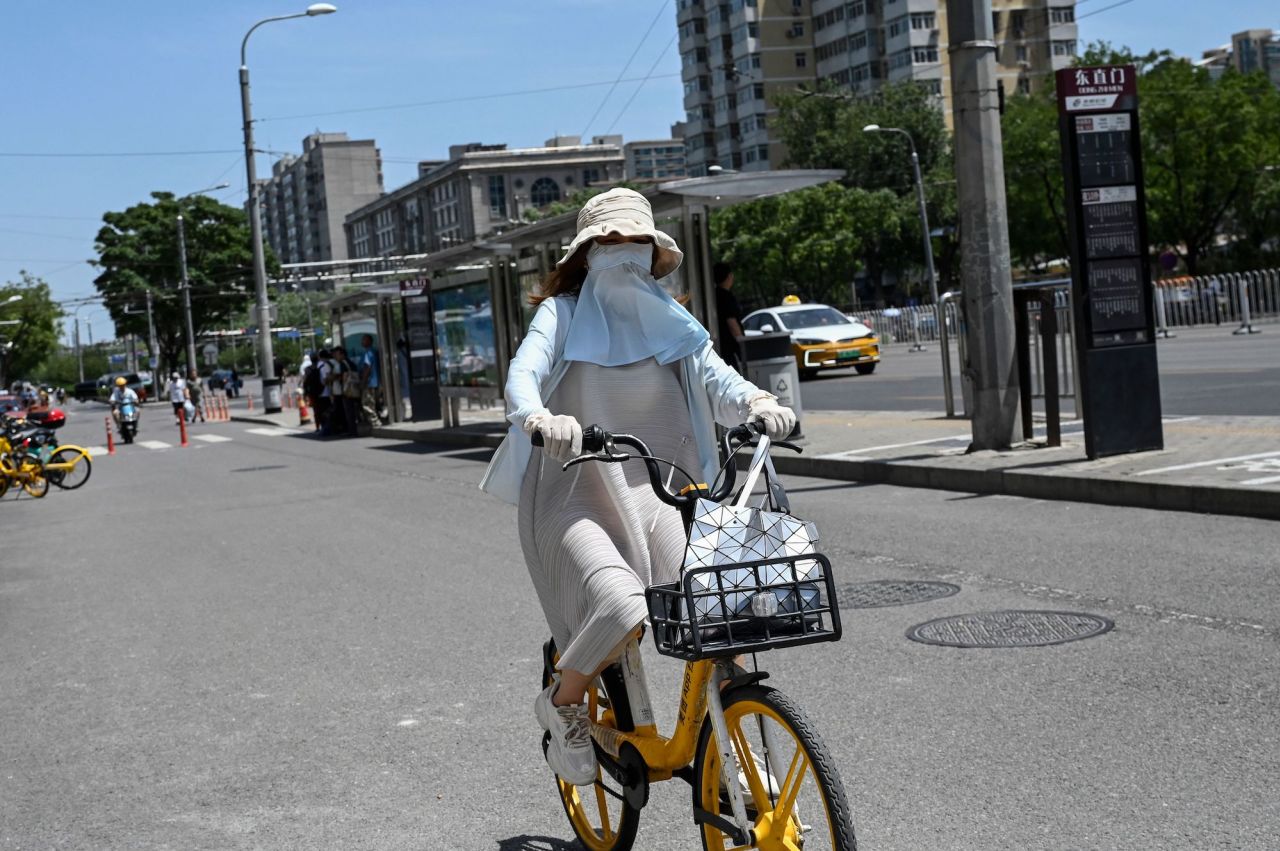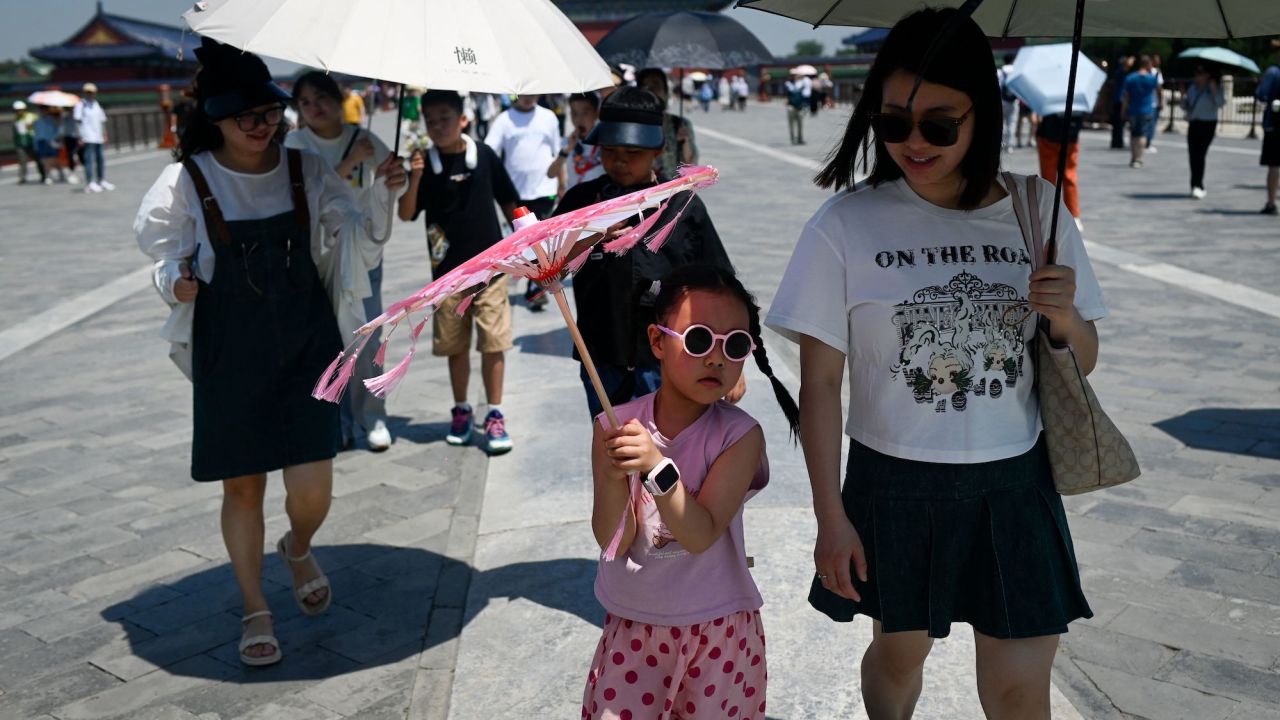It has been the hottest summer on record, and according to scientists, it won’t be the last. As the planet warms, experts say picking the right clothing to beat the heat will be critical to your health and well-being.
“If you’re making the wrong clothing choices, it can not only contribute to skin complications such as irritation, chafing and heat rash, but it can also contribute to heat exhaustion,” said Houston dermatologist Dr. Rajani Katta, a spokesperson for the American Academy of Dermatology.
Heat exhaustion happens when the body loses too much water or salt through excessive sweating. Left untreated, it can progress to heatstroke, a life-threatening condition that occurs when the body can no longer control its temperature.
Allow sweat to evaporate
Humans are designed to self-regulate body temperature by radiating heat directly off the skin and by sweating. When the body overheats, the brain tells sweat glands in the skin to open up and get busy. But it’s not the sweat that cools us — it’s the evaporation of that moisture from our skin that chills the body.
“We want to help that process along, not hinder it,” said Dr. Prabu Selvam, emergency medical officer at Americares, a health-focused relief and development nonprofit that has developed heat-related tip sheets for the public.
“Wearing loosely fitting clothing that’s breathable and can allow for the evaporation of sweat from the body and the release of heat from the skin is going to be really critical,” he added.
Here’s where breathable natural fabrics enter the picture. A loose-fitting, 100% cotton shirt, a linen dress (which is made out of flax) or a silk blouse will feel lighter and allow air to circulate, thus allowing the body to do its job.
People with sensitive skin or who are prone to irritation or chafing need to consider the feel of the natural fabric against their skin when choosing a garment from natural fibers, Katta said.
“There are versions of 100% cotton and 100% linen that can be really soft or really rough,” she said. “You need to factor that in because heat and humidity make the skin more prone to irritation, and when you add friction from rough clothing, it can make things worse.”

Another option: clothing with vents that can open to improve airflow around the body. Shirts, shorts and pants with this feature are typically designed for hiking and outdoor activities.
Lighter-colored fabrics with loose weaves reflect the heat and are better choices for hot weather than dark clothes, experts say — with one exception. Darker clothing and a dense, tight construction do a better job of protecting the skin from dangerous rays from the sun that can cause sunburn and aging. A good sunscreen before venturing out in light-colored clothing can help, experts say.
While not the stylish option, wearing a self-cooling neck wrap or carrying a misting device and wetting the back of the neck, forehead and pulse points on the wrists can help cool the body as moisture evaporates.
And don’t forget a hat. Wide-brimmed hats cover the back of the neck, shoulders and arms. Many styles have sun protection built in to repel dangerous ultraviolet rays. Also consider a UV protection umbrella designed specifically for being in the sun.
How much will you sweat?
Picking the appropriate clothing all sounds simple, right? Unfortunately, there’s much more to consider when making a choice on what to wear. Humidity, for example, can rob the skin of its ability to evaporate sweat — when there’s too much moisture in the air, there’s nowhere for sweat to go.
Natural fabrics such as cotton and silk will absorb sweat but are not good at releasing it into the atmosphere. If you’re an athlete, work outdoors, or live or visit a humid environment, it won’t be long before that comfortable cotton T-shirt or flowy silk blouse will be drenched and sticking like glue to your body — making the heat even more unbearable.
“As a dermatologist in hot, humid Houston, I’m thinking about function first, and then I’ll consider fit, fabric and feel,” Katta said. “If you’re sightseeing and going in and out of air-conditioned buildings, your choices are going to be very different than if you are out in the hot sun for football practice.”
When heavy sweating will occur, a close-fitting garment that wicks sweat away from the body may be a better choice, she said.
“Moisture-wicking technology helps encourage sweat to evaporate, and it keeps your skin dry,” Katta said. “In order to do its job of wicking that moisture away from your skin, it does have to be a little bit snug against your skin — this is that interplay between fit and fabric.”

There are also clothes made to repel ultraviolets rays, which are rated by their ultraviolet protection factor, or UPF. Anything below 15 UPF is not considered protective; the Skin Cancer Foundation considers a garment with a UPF between 30 and 49 to be “very good” protection, while those with UPF 50-plus are “excellent.”
Garments made from UPF-rated fabric will not wick moisture, but some companies have created clothing that combines sun protection and moisture-wicking properties.
“I wouldn’t recommend wearing really tight moisture-wicking fabric against your skin for an entire day,” Katta said. “But while you’re exercising, it would be a great choice.”
At this time, however, no wardrobe choices can protect the body from really intense heat, Katta said. It’s also important to check the heat index before heading out for the day.
“The National Weather Service has done a great job of emphasizing the heat index, which considers both heat and humidity, and I think it’s really important,” Katta said. “I really want to emphasize that the best clothing choices aren’t going to help you overcome a high heat index.”
The next generation of clothing
That’s where next-generation “smart fabrics” will come in, said Jinlian Hu, a professor in the department of biomedical engineering at the City University of Hong Kong. She leads a team of 21 doctoral students trying to build garments for human health via chemistry at the university’s Laboratory of Wearable Materials for Healthcare.
Hu considers cotton and natural fiber fabrics to be a first generation of clothing, garments with ultraviolet and other protections as second generation, and those with the ability to move moisture from the skin to the outside of the garment as the third generation.

In the not-so-distant future, Hu sees scientists creating garments — and accessories — that will combine all three. These fabrics will be able to regulate the body’s temperature in both hot and cold environments. One garment may be able to insulate the body from freezing and cool it during perspiration from heat — all while protecting the skin from the sun.
“We can create textiles, clothing and accessories as a form of health, for medicine, for human comfort,” Hu said. “Clothing is not only for courtesy, for style and for beauty, it is also more and more related to health.”
Get inspired by a weekly roundup on living well, made simple. Sign up for CNN’s Life, But Better newsletter for information and tools designed to improve your well-being.
